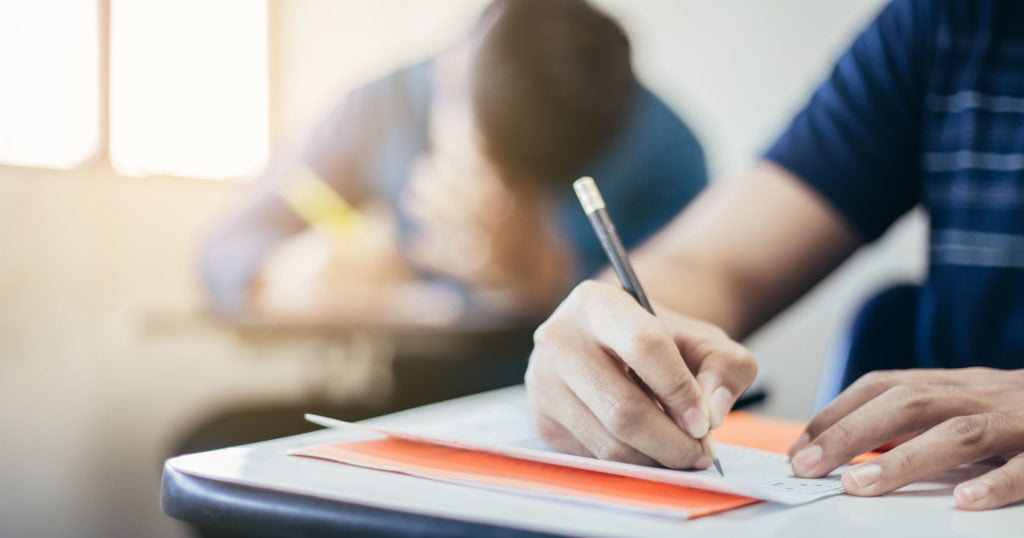Students, Retailers Face a New Type of Back-to-School Season


Although the back-to-school season has long held a special place in both consumers’ and retailers’ hearts, 2021’s return to school (or campus) has a unique COVID-specific undertone. Last year’s massive switch to at-home or hybrid learning for much of the country created a need to rethink all things education related. The hottest items included safer modes to learn via technology and gadgets, as well as online learning. Classic accessories took a backseat to masks and hand sanitizer. This year, consumers are poised to spend big and ensure their kids are safe and well-heeled when they head out the door to learn.


Improving confidence in the economy, healthy savings accounts, and a child tax credit [may] be tailwinds for retailers this year as parents replenish supplies and invest in digital resources and devices,” wrote Deloitte in its 2021 back-to-school survey.
Backing Deloitte’s forecast, the National Retail Federation (NRF) reported in July that it expected to see record spend levels for back-to-school 2021. Families with children ranging from elementary to high school planned to spend an average of $848.90 on school items, $59 more than last year, according to the NRF. Total spending is expected to reach $37.1 billion, up from $33.9 billion last year, making 2021 spend an all-time high in the NRF survey’s history.
The Great Unknown
As students head back, uncertainty about gathering indoors for an extended period of time each day still casts a shadow. The Deloitte survey revealed that although parents and students feel optimistic about the coming year, 3 in 10 children will still experience some form of virtual learning, with 11% expecting to be fully virtual and 19% opting to go hybrid. Consumers tied their concerns to their own health and that of their families (62%), and anxiety about sending students back to school (49%). In addition, 38% reported concerns about an inability to make upcoming payments for credit cards and housing, including rent or mortgage.
For Katie Wibby, a teacher and a parent to an incoming first grader, the uncertainty lies in what she needs to buy. Last year, kindergarten for her daughter was virtual, so shopping for supplies was a non-event. And, when Wibby taught last year, she used a combined digital and hands-on/in-person toolkit.
“I feel like I’m flying blind without going through it all last year,” she says of buying for her daughter. “But I’ve already bought some lunch-box supplies and a new water bottle, along with name labels. And I bought myself another set of rulers for my classroom since they were on sale.” She says it’’s “weird” being a teacher and mom and buying supplies from both sides, while still not being sure what the year will look like.
Not Exactly “Out with the Old”
Although the ads for BTS often hit the airwaves and papers long before some students are even released for summer break, this year, a sense of urgency dominated the narrative, and for good reason. In 2020, consumers experienced supply chain disruption, and according to Deloitte, 50% of shoppers reported concerns for items “stockouts,” and as a result, shoppers conducted 59% of their BTS spend by the end of July, compared to the 45% who had done so in 2020.
In 2020, as parents ditched the office to work from home and kids did online learning, technology-centric items took center stage, edging out more traditional supplies like backpacks, pencils, and paper. Deloitte reported that for the 2020 school year, 40% of parents intended to subscribe to e-learning courses, and 32% of parents planned to buy digital devices for their children.
But thanks to mask mandates, vaccines, and in-person requirements, the 2021 return is poised to supply another boost to spending in the tech category, according to Deloitte. Technology products are expected to see 37% year-over-year growth as parents anticipate spending on computer and hardware and electronic gadgets to the tune of $5.9 billion each, and 58% will spend the same or more on online learning resources, such as classes or courses, this year.
Getting Toward “In with the New”
This year’s “new normal” is grounded in the lessons consumers and retailers learned last year and an optimistic hope for the coming one. Accommodating customers now means also continuing to rely heavily on omnichannel methods to deliver the goods. Consumers reported more ease with shopping in-store compared to last year, but the most popular destination for both K-12 and college shoppers remains online, according to NRF.
Deloitte reported that online shopping will contribute to overall BTS spend to the tune of $12.5 billion compared to $14 billion in-store, with another $6 billion in shopping is up for grabs. Meanwhile, seven in 10 consumers reported plans to continue mobile-based ordering that they had started up during the pandemic. According to Deloitte, in 2020, consumers opted for click-and-collect services initially for the health and safety they provided. Over time, however, consumers found the options safe, convenient, and efficient enough that they will continue to use these methods going forward.
Craving Normal
Where planning and executing a family’s BTS budget might have been a chore for some in the pre-COVID past, being able to even glimpse at an in-person future has its own merits. For example, Jessica Hodges is a mother of two daughters, a high-schooler and a middle-schooler. Rather than allocate money strictly to school supplies, such as pencils or books, her family has opted to adopt a BTS budget for the entire year that includes new backpacks and clothes in addition to money for activities, mementos such as yearbooks, and team sports.
When it comes to her family’s school-spending budget, “around 25% is experiences/sports fees, 25% school fees (including 2 AP exam fees), 25% supplies (including sports supplies) and “oops mom I need…” she says. “The remaining amount will get us a few outfits.”
Whether they are online snapping up deals or venturing out masked up and ready to score supplies, having a better sense of what could be ahead gives parents a new perspective and a fresh take on safety and empowerment. Jennifer Darcy admits she hasn’t bought anything fun yet for her soon-to-be fourth-grader, but she has stocked his mask game to the tune of $155, making him extra prepared to stay safe at school.
Masks aside, it’s undeniable that Darcy is the parent of a growing son. As such, despite all the changes to his BTS larder, some things remain very much the same because of one thing: his feet.
“I expect to be ordering him new tennis shoes any day now, too,” she says.

